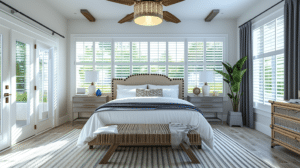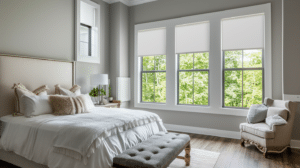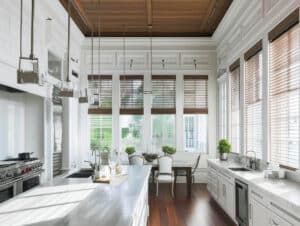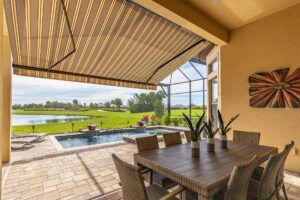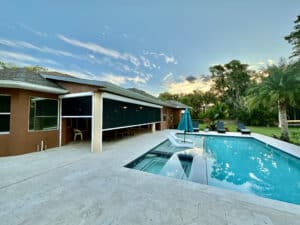
Energy Efficient Windows in Winter
January 19, 2017
Buy 1 Get 1 50% OFF
Everything*
Request Free
In-Home Consultation
Here are a few tips on how to keep your homes comfortable this winter and keep your energy bill lower. Lots of these tips utilize window coverings to keep your energy costs low. Especially in places like Indiana where the temperatures can get down into the zeros.
Insulation
First, good quality window coverings help with insulation. In winter, they reduce heat transfer out the window. In the summer they help prevent heat transfer in the window. Insulation is typically more important in cold climates than hot because in the winter time, depending on the region where you live, the temperature difference between indoor and outdoors can be as 70 degrees or even more. While in the summer time the differences are rarely more than 30 degrees. Because the rate of heat transfer increases as the temperature difference increases, an appropriate amount of insulation is critical. It is more important to slow that transfer rate during the cold winter months.
Solar heat control
Secondly, window coverings help with solar heat control. In summer (and year round hot climates), solar heat control becomes more important than insulation. Solar heat is brought into the home by direct or reflected sunlight. The sunlight becomes heat when it warms the air and the furnishings in its path. The warmed furnishings in turn, give off heat to the room. To maintain comfort, the warmed room must be cooled, requiring more electricity and cost than would be needed if the solar energy had been properly controlled by window coverings. A big part of solar heat control is reflecting the incoming sunlight back out the window. For this reason, a white or light-colored street side window covering is preferred. Darker colors tend to absorb energy, and then radiate it into the room. Solar heat gain is desired in winter time to help heat the home. Window coverings should be opened in the winter time on south, east and west facing windows.
Day-lighting
A third and often overlooked element of energy efficiency and window coverings is related to an effect called day-lighting. Day-lighting is a window coverings ability to diffuse incoming sunlight , soften it, and bring it deeper into a room. In addition to reducing glare and improving visual comfort, daylighting can often save energy by reducing the need for electrical lighting.
TAKE ADVANTAGE OF HEAT FROM THE SUN
Open curtains on your south-facing windows during the day to allow sunlight to naturally heat your home, and close them at night to reduce the chill you may feel from cold windows.
COVER DRAFTY WINDOWS
Use a heavy-duty, clear plastic sheet on a frame or tape clear plastic film to the inside of your window frames during the cold winter months. Make sure the plastic is sealed tightly to the frame to help reduce infiltration. Install tight-fitting, insulating drapes or shades on windows that feel drafty after weatherizing.
ADJUST THE TEMPERATURE
When you are home and awake, set your thermostat as low as is comfortable. When you are asleep or out of the house, turn your thermostat back 10° to 15° for eight hours and save around 10% a year on your heating and cooling bills. A programmable thermostat can make it easy to set back your temperature.
FIND AND SEAL LEAKS
Seal the air leaks around utility cut-throughs for pipes (“plumbing penetrations”), gaps around chimneys and recessed lights in insulated ceilings, and unfinished spaces behind cupboards and closets. Add caulk or weatherstripping to seal air leaks around leaky doors and windows.
MAINTAIN YOUR HEATING SYSTEMS
Schedule service for your heating system. Find out what maintenance is required to keep your heating system operating efficiently.
- Furnaces: Replace your furnace filter once a month or as needed. Find out more about maintaining your furnace or boiler.
- Wood- and Pellet-Burning Heaters: Clean the flue vent regularly and clean the inside of the appliance with a wire brush periodically to ensure that your home is heated efficiently.
REDUCE HEAT LOSS FROM THE FIREPLACE
- Keep your fireplace damper closed unless a fire is burning. Keeping the damper open is like keeping a window wide open during the winter; it allows warm air to go right up the chimney.
- When you use the fireplace, reduce heat loss by opening dampers in the bottom of the firebox (if provided) or open the nearest window slightly–approximately 1 inch–and close doors leading into the room. Lower the thermostat setting to between 50° and 55°F.
- If you never use your fireplace, plug and seal the chimney flue.
- If you do use the fireplace, install tempered glass doors and a heat-air exchange system that blows warmed air back into the room.
- Check the seal on the fireplace flue damper and make it as snug as possible.
- Purchase grates made of C-shaped metal tubes to draw cool room air into the fireplace and circulate warm air back into the room.
- Add caulking around the fireplace hearth.


Recent Posts
Screen Dreams Are Made of These Custom Screen Rooms
Garage Screen DIY Made Easy: Motorize Your Space
Window Dressing Made Easy with Decorative Roller Shades
Categories
Download our Motorized Pergola Guide
Looking for inspiration? Download our free feature packed pdf and see what all options you can get in your pergola.
What Products Are You Interested In?
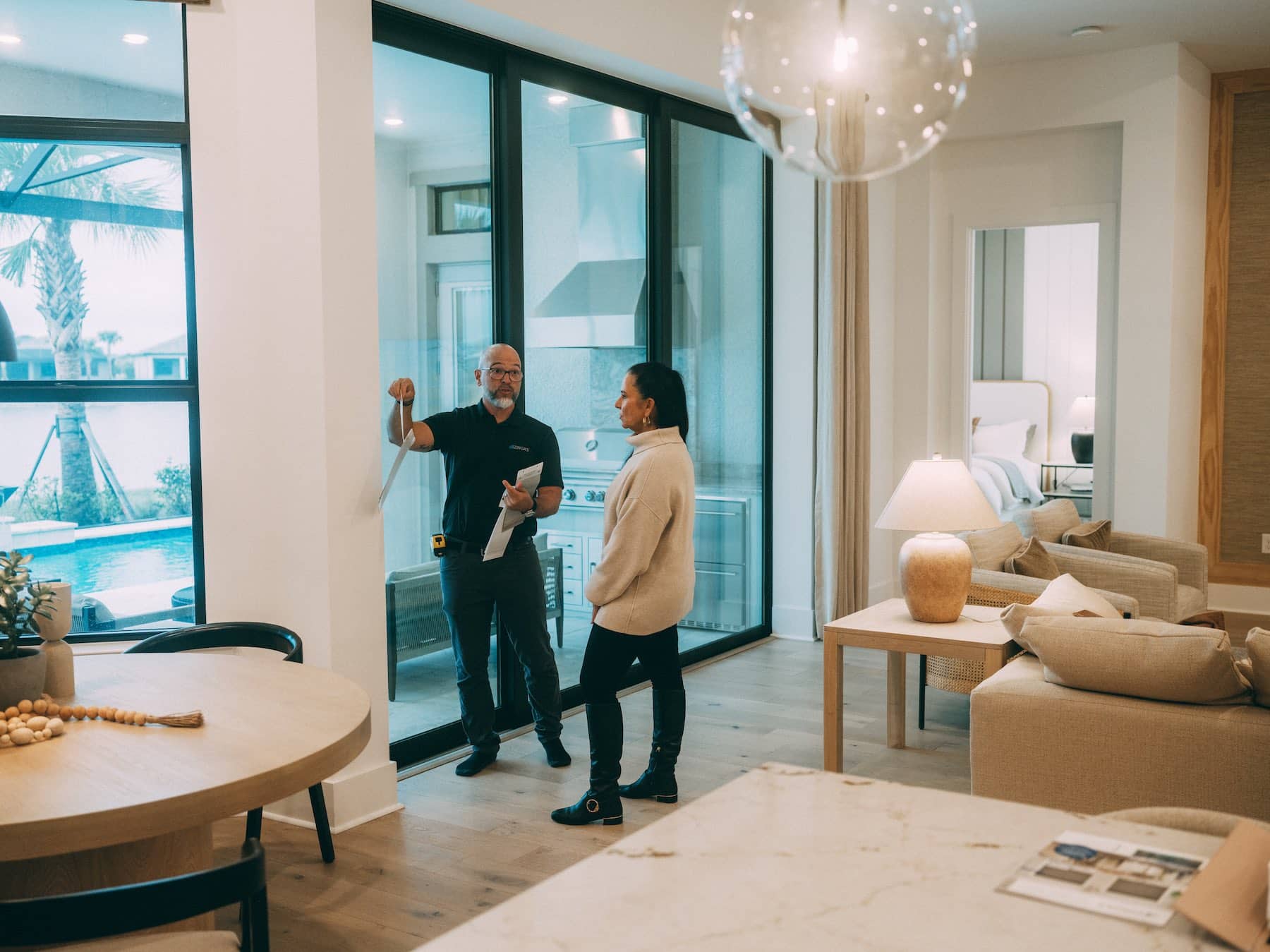
Zinga's Custom Window Coverings
STEP 1: Complimentary In-Home Consultation
We bring sample products & fabrics directly to your home so you can see and feel the products in your home.
STEP 2: Precise Measuring & No Pressure Quote
We take precise measurements of all your windows and provide you a no pressure quote at the time of your consultation.
STEP 3: Hassle Free Installation
Installation completed by Zinga's employee who are experts in their craft. Free yourself of the stress of installing.
Building a Home?
Building a home can be stressful enough, let us take the burden of window treatments off your hands. We will meet with you after your drywall is complete and can install as soon as you move in!







Who Is Zinga’s?
Zinga’s has been offering window treatments for 25 years and has grown 25% year over year! How did we do that? Simple, we’ve put our customer first. We genuinely love our customers and giving them great service. We want to wow our customers and when you wow your customers they give great referrals. See our over 2000+ reviews, our customers speak for themselves!
Learn More About Zinga's

